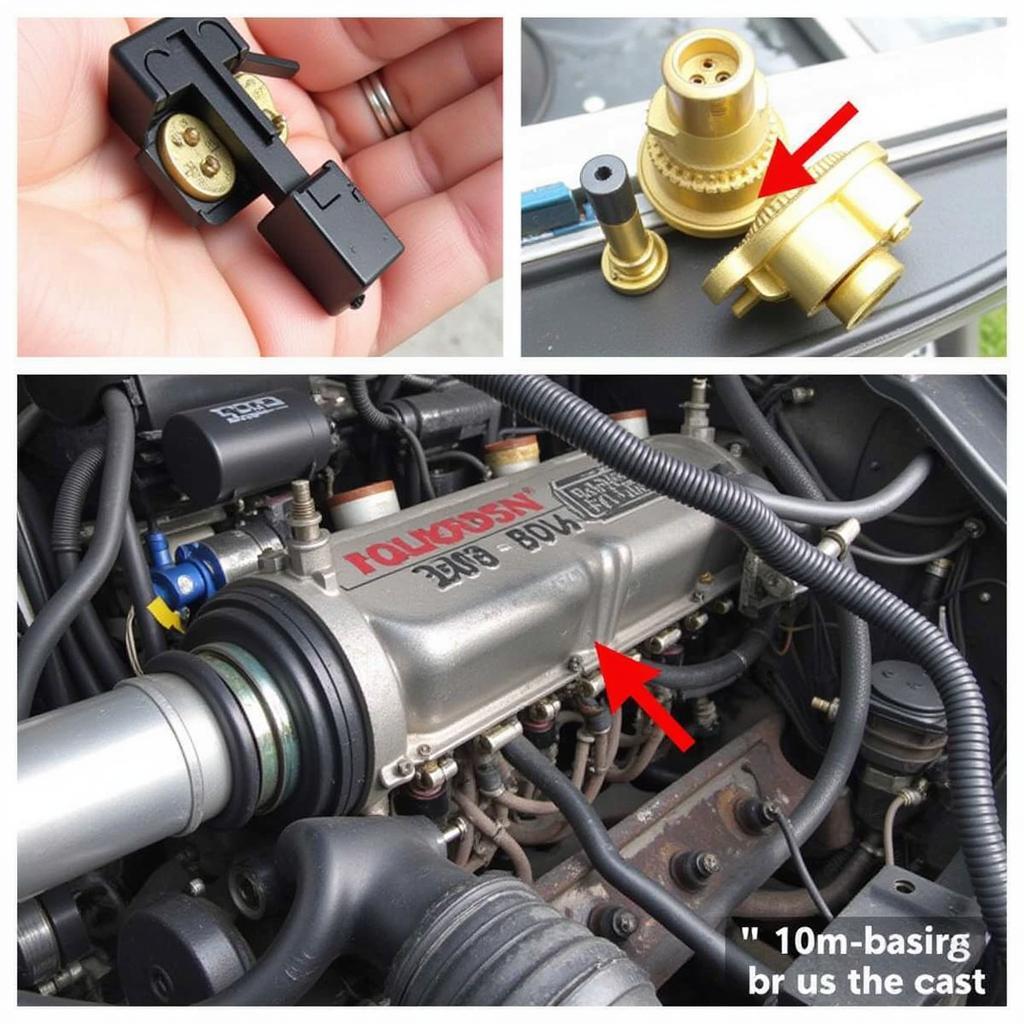The Triumph TR6 is a classic British sports car renowned for its style and performance. However, like any vehicle, it can experience issues over time. One common problem that TR6 owners may encounter is a malfunctioning brake pressure warning switch. This article will guide you through the symptoms, causes, and solutions related to the Triumph TR6 brake pressure warning switch.
Understanding the Brake Pressure Warning Switch
The brake pressure warning switch plays a crucial role in ensuring your safety by alerting you to potential problems within the hydraulic brake system. It’s designed to activate a warning light on your dashboard if it detects a significant difference in pressure between the two hydraulic circuits in your braking system. This difference could indicate a leak or other malfunction that requires immediate attention.
Common Symptoms of a Faulty Switch
- Illuminated Brake Warning Light: This is the most obvious sign. If the switch malfunctions, it can trigger the warning light even when there’s no actual problem with your brake system.
- Flickering Warning Light: A flickering light could indicate a failing switch or a loose connection.
- No Warning Light Despite Brake Problems: Conversely, a faulty switch might not activate the warning light even if there’s a genuine brake issue, which is a serious safety concern.
Causes of Brake Pressure Warning Switch Problems
Several factors can lead to a malfunctioning brake pressure warning switch in your Triumph TR6:
- Age and Wear: Over time, the internal components of the switch can wear down or corrode, leading to erratic behavior.
- Fluid Contamination: Brake fluid is hygroscopic, meaning it absorbs moisture from the air. Contaminated fluid can cause internal corrosion and damage the switch.
- Wiring Issues: Loose or damaged wiring connected to the switch can disrupt the signal, causing false readings.
- Incorrect Switch Installation: If the switch isn’t installed correctly, it may not function properly.
Troubleshooting the Brake Pressure Warning Switch
 Triumph TR6 Brake Pressure Warning Switch Location
Triumph TR6 Brake Pressure Warning Switch Location
Before replacing the switch, it’s crucial to rule out other potential causes for the warning light:
- Check the Brake Fluid Level: Ensure the brake fluid reservoir is topped up to the appropriate level. Low fluid level can trigger the warning light.
- Inspect for Leaks: Thoroughly examine all brake lines, calipers, and wheel cylinders for any signs of fluid leakage.
- Examine the Switch Connections: Check the electrical connections to the switch for any looseness or damage. Clean any corrosion and ensure a secure fit.
Testing the Switch
You can test the switch using a multimeter to check for continuity:
- Disconnect the electrical connector from the switch.
- Set your multimeter to the continuity setting.
- Connect one lead of the multimeter to each terminal on the switch.
- With the brake pedal released, the multimeter should show no continuity.
- Depress the brake pedal. The multimeter should now show continuity.
If the multimeter doesn’t behave as described, the switch likely needs replacement.
Replacing the Brake Pressure Warning Switch
- Locate the Switch: The switch is typically located on the master cylinder or along the brake lines.
- Depressurize the Brake System: Open the brake fluid reservoir cap and use a turkey baster or similar tool to remove some brake fluid.
- Disconnect the Switch: Disconnect the electrical connector and use a wrench to loosen and remove the switch.
- Install the New Switch: Apply a small amount of brake fluid to the threads of the new switch and install it, tightening it securely.
- Reconnect the System: Reconnect the electrical connector and refill the brake fluid reservoir to the proper level.
- Bleed the Brakes: It’s crucial to bleed the brakes after opening the system to remove any air bubbles that may have entered.
Expert Insight
“Many classic car owners underestimate the importance of regular maintenance,” says John Smith, a seasoned mechanic specializing in vintage British cars. “Regularly inspecting and replacing worn-out components like the brake pressure warning switch can save you from a lot of trouble and ensure your safety on the road.”
Conclusion
Addressing issues with your Triumph TR6 brake pressure warning switch promptly is essential for maintaining a safe and reliable driving experience. By understanding the symptoms, causes, and solutions outlined in this article, you can confidently diagnose and fix problems related to this crucial component. Remember, when in doubt, consulting a qualified mechanic experienced with classic cars is always recommended.
FAQs
1. Can I drive my TR6 with the brake warning light on?
It’s strongly advised against driving with the brake warning light on. It indicates a potential problem with your braking system.
2. How often should I replace my brake pressure warning switch?
While there’s no set replacement interval, it’s good practice to inspect and consider replacing the switch during major brake work or if you notice any signs of malfunction.
3. Can I use any brake fluid in my Triumph TR6?
Always consult your owner’s manual for the recommended brake fluid type and specifications. Using the wrong fluid can damage your brake system.
4. Where can I find a replacement brake pressure warning switch for my TR6?
Reputable Triumph parts suppliers or online retailers specializing in classic car parts are good sources for finding a replacement switch.
5. Is bleeding the brakes after replacing the switch complicated?
While it’s a straightforward process, if you’re not comfortable with it, it’s best to have a qualified mechanic perform the bleeding procedure to ensure it’s done correctly.
